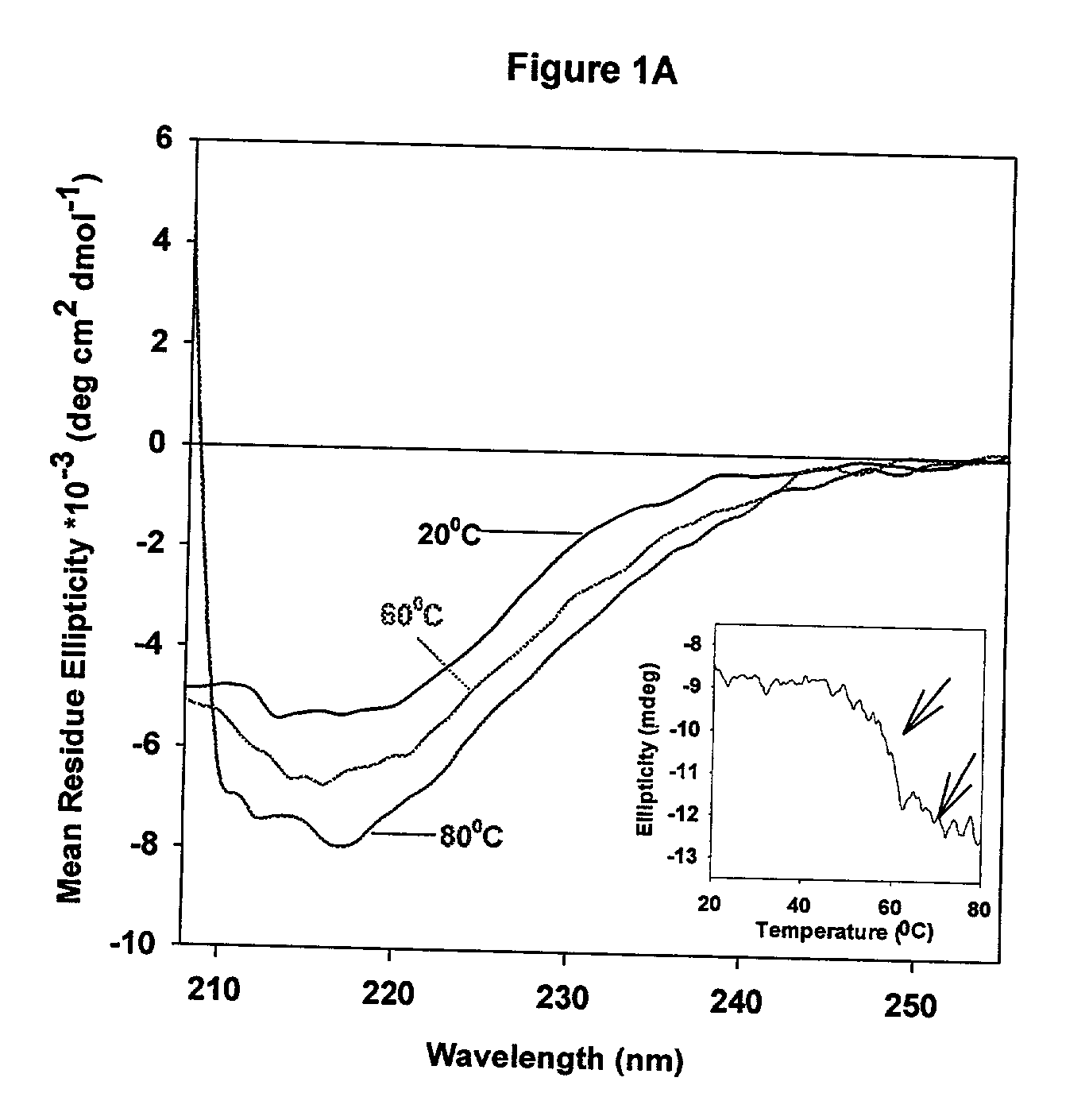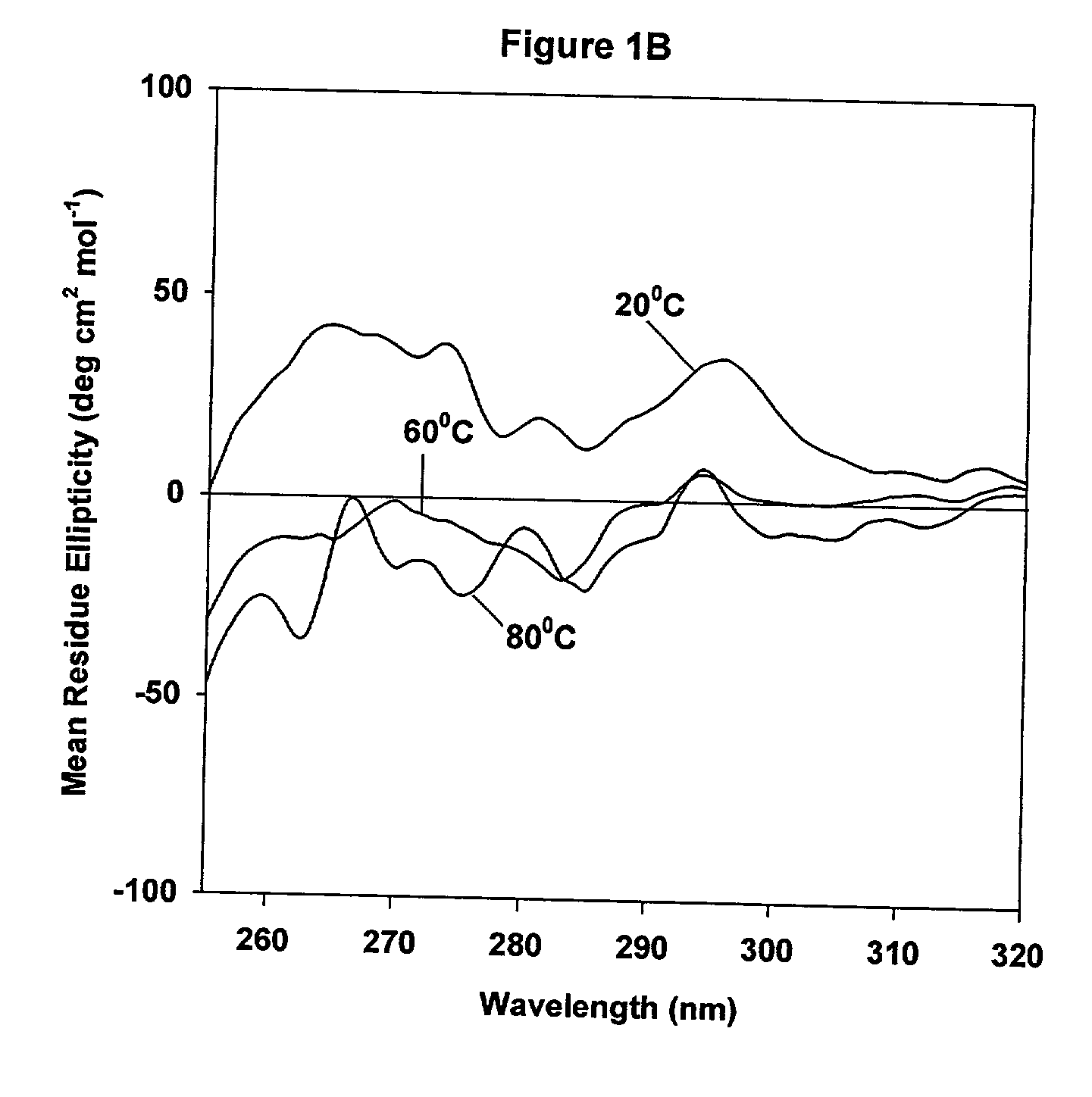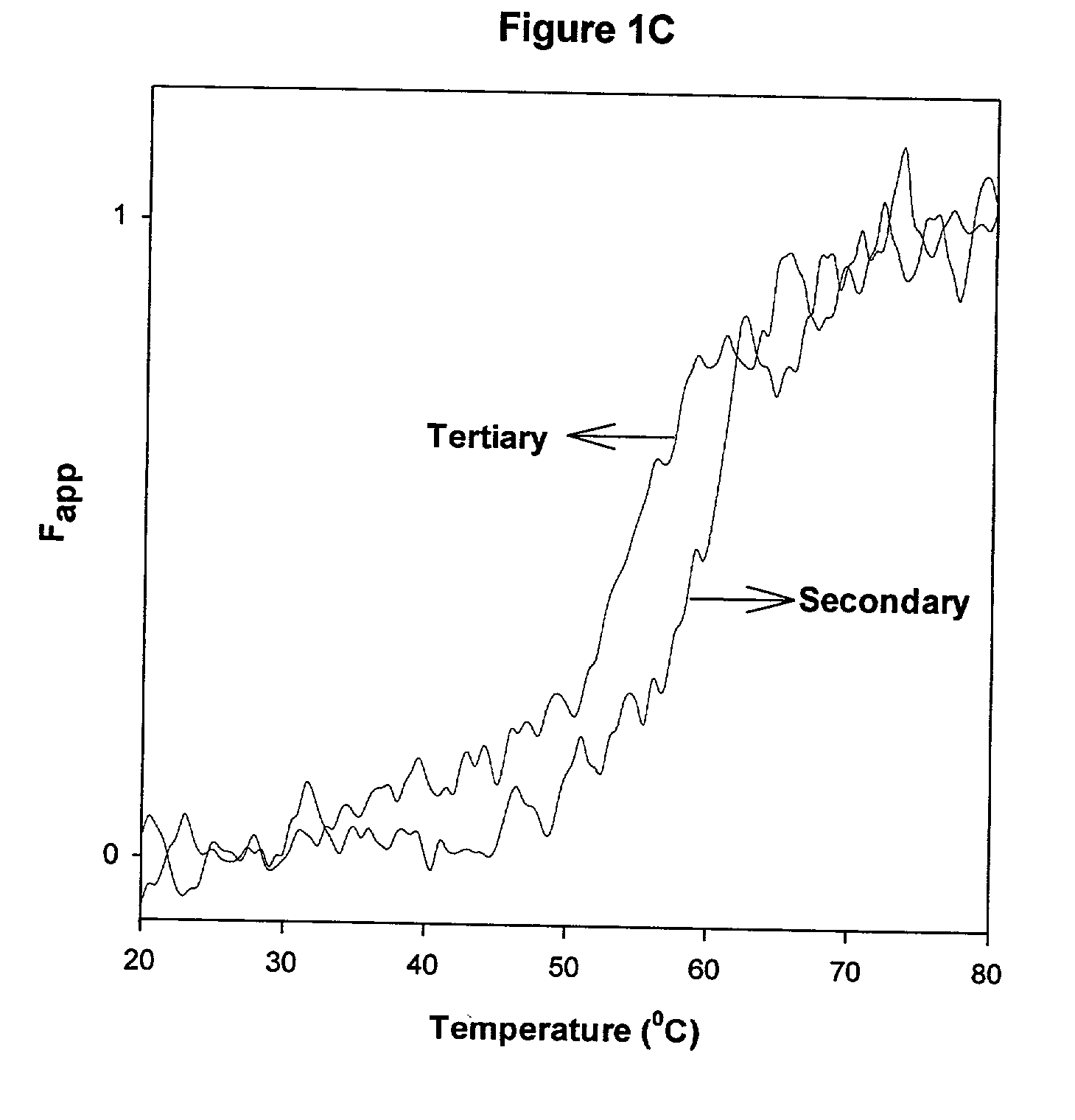AHF associated dispersion system and method for preparation
a dispersion system and associated technology, applied in the field of ahf associated dispersion system and method for preparation, can solve the problems of increasing the cost of patient discomfort, irreversible loss of protein structure, and inability to meet the needs of patients, and achieves the effects of reducing the intensity of peaks, increasing temperature, and reducing the ellipticity at 295 nm
- Summary
- Abstract
- Description
- Claims
- Application Information
AI Technical Summary
Benefits of technology
Problems solved by technology
Method used
Image
Examples
example 1
Preparation of Liposomes
Conventional Method
[0047] In the procedure according to the conventional method: 0.30 mg / ml DMPC, 0.15 mg / ml bPS and 0.04 mg / ml DSPE-PEG dissolved in chloroform were taken in a round-bottomed flask and the solvent was removed using a rotary evaporator, depositing the lipid as a thin film along the walls of the flask. Multilamellar vesicles (MLV) encapsulating the protein were formed by dispersing the lipid film in the appropriate buffer (0.4 M NaCl and 50 Mm Tris) containing 0.5 mg / ml of the protein, with gentle swirling at room temperature.
Present Methodology
Method 1
[0048] In the procedure according to the present method: 0.30 mg / ml DMPC, 0.15 mg / ml bPS and 0.04 mg / ml DSPE-PEG dissolved in chloroform were taken in a round-bottomed flask and the solvent was removed using a rotary evaporator, depositing the lipid as a thin film along the walls of the flask. Multilamellar vesicles (MLV) encapsulating the protein were formed by dispersing the lipid film in the a...
example 2
Circular Dichroism Experiments
[0050] CD spectra were acquired on a JASCO-715 spectropolarimeter calibrated with d10 camphor sulfonic acid. Samples were scanned in the range of from 205 nm to 255 nm for secondary structure analysis, and typically, the protein concentration used was about from 20 .mu.g / ml to 22 .mu.g / ml. For near-UV CD studies, spectra were acquired in the range of from 320 nm to 255 nm, using a 10 mm quartz cuvette, and the protein concentration used was about 0.5 mg / ml. CD spectra of the protein were corrected by subtracting the spectrum of the buffer baseline and multiple scans were acquired and averaged to improve signal quality. The CD spectra of samples containing liposomes may be distorted as a result of light scattering. The contribution due to light scattering was corrected as follows: (1) the ellipticity values at from 350 nm to 400 nm were monitored and used as a baseline that was subtracted from the scans; (2) multiple scans were acquired and averaged to i...
example 3
Fluorescence Studies
[0051] Fluorescence spectra were acquired on a SLM 8000C spectrofluorometer (Urbana, Ill.). The intensity of the emission spectra was monitored over the range of from 300 nm to 400 nm, using a slit width of 4 nm on the excitation and emission paths. The excitation monochromator was set at 280 nm and a 295 nm long pass filter was used to minimize scattering effects. The melting of the protein was followed by monitoring the decrease in the intensity of the emission at 330 nm over the temperature range of from 25.degree. C. to 90.degree. C. Samples were equilibrated at the desired temperature for approximately 3 to 4 minutes using a water bath (Neslab RTE 110).
PUM
| Property | Measurement | Unit |
|---|---|---|
| temperature | aaaaa | aaaaa |
| temperature | aaaaa | aaaaa |
| temperature | aaaaa | aaaaa |
Abstract
Description
Claims
Application Information
 Login to View More
Login to View More - R&D
- Intellectual Property
- Life Sciences
- Materials
- Tech Scout
- Unparalleled Data Quality
- Higher Quality Content
- 60% Fewer Hallucinations
Browse by: Latest US Patents, China's latest patents, Technical Efficacy Thesaurus, Application Domain, Technology Topic, Popular Technical Reports.
© 2025 PatSnap. All rights reserved.Legal|Privacy policy|Modern Slavery Act Transparency Statement|Sitemap|About US| Contact US: help@patsnap.com



